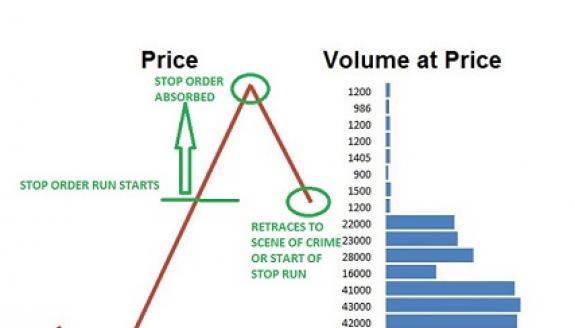
Currency options are derivatives that allow investors to safeguard themselves against the risk of a possible exchange rate change. These options may be purchased using a variety of methods.
A forex broker can be used to trade currency options. The forex broker will assume the risk for the investor, and charge a fee. This is an ideal way for novices to get into the forex market. They can trade small amounts of money with minimal risk.
NASDAQ OMX provides currency options in many different currencies, such as the Australian dollar (AUD), British pound (GBP), Canadian dollar (CAD), euro, Japanese yen and Swiss franc. These options can be settled in cash and come with a variety of strike prices and expiration dates.

The Chicago Mercantile Exchange, or London Stock Exchange are regulated exchanges where you can purchase foreign currencies options. These exchanges have a variety of options and expiration dates with standard maturities. However, they are less flexible than those at the NASDAQ OMX.
Currency options allow you to hedge your currency against fluctuating values without paying for the actual currency. They can also be used to speculate in the market, with the prospect of making money if the price of the currency is above or below the option's strike price when the option expires.
The way you trade currency options depends on how much capital you have. Others use them to supplement their investment portfolios while some only trade them as pure speculation.
How to trade currency options
When trading currency options, the first thing you should know is that these are complex instruments which carry a very high risk of financial loss. These options are not suitable to everyone. Therefore, it is important that you do research and fully understand them before engaging in a transaction.

Forex options include futures, options and FX futures. FX swaps, forwards and options can also be traded.
Everyone who is interested in currencies and forex can trade these popular options. You can use them for both hedging as well as speculative reasons, but it's important to keep in mind that they can be very volatile.
How to Trade Currency Options
There are two basic types of forex options, call and put. Calls give you the option to buy a particular currency for a specified period of time. Puts, on the other hand, allow you to sell the currency for that same time. The price for the option is based upon a combination of strike price and exchange rate.
FAQ
How are securities traded
The stock market is an exchange where investors buy shares of companies for money. To raise capital, companies issue shares and then sell them to investors. These shares are then sold to investors to make a profit on the company's assets.
Supply and demand determine the price stocks trade on open markets. The price goes up when there are fewer sellers than buyers. Prices fall when there are many buyers.
There are two options for trading stocks.
-
Directly from your company
-
Through a broker
Why is a stock called security.
Security refers to an investment instrument whose price is dependent on another company. It could be issued by a corporation, government, or other entity (e.g. prefer stocks). The issuer promises to pay dividends and repay debt obligations to creditors. Investors may also be entitled to capital return if the value of the underlying asset falls.
How do I choose an investment company that is good?
Look for one that charges competitive fees, offers high-quality management and has a diverse portfolio. Fees are typically charged based on the type of security held in your account. Some companies charge nothing for holding cash while others charge an annual flat fee, regardless of the amount you deposit. Others may charge a percentage or your entire assets.
Also, find out about their past performance records. Companies with poor performance records might not be right for you. Avoid companies that have low net asset valuation (NAV) or high volatility NAVs.
You also need to verify their investment philosophy. To achieve higher returns, an investment firm should be willing and able to take risks. They may not be able meet your expectations if they refuse to take risks.
Statistics
- "If all of your money's in one stock, you could potentially lose 50% of it overnight," Moore says. (nerdwallet.com)
- Individuals with very limited financial experience are either terrified by horror stories of average investors losing 50% of their portfolio value or are beguiled by "hot tips" that bear the promise of huge rewards but seldom pay off. (investopedia.com)
- The S&P 500 has grown about 10.5% per year since its establishment in the 1920s. (investopedia.com)
- Even if you find talent for trading stocks, allocating more than 10% of your portfolio to an individual stock can expose your savings to too much volatility. (nerdwallet.com)
External Links
How To
How to open an account for trading
Opening a brokerage account is the first step. There are many brokers out there, and they all offer different services. Some brokers charge fees while some do not. Etrade, TD Ameritrade Fidelity Schwab Scottrade Interactive Brokers are some of the most popular brokerages.
Once your account has been opened, you will need to choose which type of account to open. These are the options you should choose:
-
Individual Retirement Accounts (IRAs).
-
Roth Individual Retirement Accounts
-
401(k)s
-
403(b)s
-
SIMPLE IRAs
-
SEP IRAs
-
SIMPLE SIMPLE401(k)s
Each option offers different advantages. IRA accounts provide tax advantages, however they are more complex than other options. Roth IRAs allow investors to deduct contributions from their taxable income but cannot be used as a source of funds for withdrawals. SIMPLE IRAs and SEP IRAs can both be funded using employer matching money. SIMPLE IRAs have a simple setup and are easy to maintain. They allow employees to contribute pre-tax dollars and receive matching contributions from employers.
The final step is to decide how much money you wish to invest. This is known as your initial deposit. Many brokers will offer a variety of deposits depending on what you want to return. You might receive $5,000-$10,000 depending upon your return rate. This range includes a conservative approach and a risky one.
After you've decided which type of account you want you will need to choose how much money to invest. Each broker sets minimum amounts you can invest. These minimums vary between brokers, so check with each one to determine their minimums.
Once you have decided on the type of account you would like and how much money you wish to invest, it is time to choose a broker. Before selecting a brokerage, you need to consider the following.
-
Fees – Make sure the fee structure is clear and affordable. Many brokers will offer trades for free or rebates in order to hide their fees. Some brokers will increase their fees once you have made your first trade. Be cautious of brokers who try to scam you into paying additional fees.
-
Customer service - Look for customer service representatives who are knowledgeable about their products and can quickly answer questions.
-
Security - Choose a broker that provides security features such as multi-signature technology and two-factor authentication.
-
Mobile apps - Check if the broker offers mobile apps that let you access your portfolio anywhere via your smartphone.
-
Social media presence – Find out if your broker is active on social media. It might be time for them to leave if they don't.
-
Technology - Does it use cutting-edge technology Is the trading platform user-friendly? Are there any issues when using the platform?
Once you have selected a broker to work with, you need an account. Some brokers offer free trials. Other brokers charge a small fee for you to get started. After signing up, you'll need to confirm your email address, phone number, and password. You will then be asked to enter personal information, such as your name and date of birth. You will then need to prove your identity.
After your verification, you will receive emails from the new brokerage firm. It's important to read these emails carefully because they contain important information about your account. The emails will tell you which assets you are allowed to buy or sell, the types and associated fees. Keep track of any promotions your broker offers. These could be referral bonuses, contests or even free trades.
Next, you will need to open an account online. An online account is typically opened via a third-party site like TradeStation and Interactive Brokers. These websites are excellent resources for beginners. To open an account, you will typically need to give your full name and address. You may also need to include your phone number, email address, and telephone number. Once this information is submitted, you'll receive an activation code. This code will allow you to log in to your account and complete the process.
Now that you've opened an account, you can start investing!